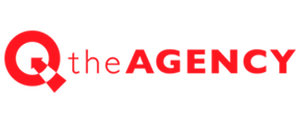03 May With CMS Comes Great Responsibility
Content Management Systems (CMS) have changed the face of websites, no doubt about it. Where in the past clients had to rely on their web agency or a programmer to make even the smallest changes to their sites, now CMS makes many changes as easy as editing a Microsoft Word document. However, this increased access and control can also bring a few pesky (but easily avoidable) challenges. The most prevalent of these is changing content without thinking about how it might alter the design, layout and look of the site.
At the Q, we spend a lot of time making sure your site looks great and functions perfectly before it’s launched. We want all the pieces to fit together. We want the best keywords to be included in the copy in all the right places. However, sometimes with a CMS component what may seem like a simple change can end up being a big one that can alter a site’s look, feel and function.
Here are a few guidelines we suggest our clients keep in mind when making revisions and additions on their own:
- When changing copy, take into account how much copy will fit in the space you’re working with. Word count can often be the difference between a page design that looks like everything fits together nicely and one that looks out of whack. When our writers craft copy, they make sure to add just the right amount required, while also making it relevant to both readers and the search engines.
- Choosing imagery requires much the same thought process. Make sure your new images are the same size and resolution as the ones you’re replacing. Otherwise they can alter the design in ways that push content around, creating unwanted white space or mismatched layout elements.
- If you’re planning on doing major changes to your site—new menus, additional pages, etc.—we suggest doing a back-up of your site first. (Q is happy to help you do it, if needed.) The last thing you want is to start moving things around and then realize you may have gone a little too far. Also, preview your content before you publish and test your changes once you’re finished. Make sure everything works the way you want before moving on to the next revision.
- It’s also a good idea to limit the number of people who will have administrative access to your site. Usually, designating a single person to make changes is the best option. It keeps the process simple and can eliminate the confusion often created with multiple users. If having multiple people is required, you have the ability to control each person’s level of access, as well. For instance, you can put one person in charge of overall site administration, while several others can have the ability to add posts, change copy or do a variety of other tasks.
As you can see, CMS can be empowering—but it’s a power you want to wield carefully. If you’d like to know more about CMS site design, we’d love to talk with you. Contact Us today and let’s discuss the best options for your next website.




